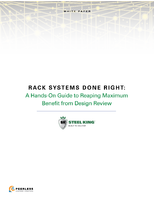Committee developing inflatable restraint cushion standard.
Press Release Summary:
ASTM International Committee D13 on Textiles is developing a proposed new standard, WK23227, Test Method for Determining Pressure Decay of Inflatable Restraint Cushions, for the testing of side curtain airbags. It is being developed by Subcommittee D13.20 to be an inexpensive screening test to judge the ability of a rollover side curtain airbag to maintain needed pressure over time. Suppliers of the airbags would be the primary users of said standard.
Original Press Release:
ASTM Textile Committee Developing Proposed Standard for Inflatable Restraint Cushions
W. CONSHOHOCKEN, Pa., 3 June 2009-Side curtain airbags are usually mounted in the roof of a vehicle and burst through the headliner to cover the side window area in the event of a side impact or rollover accident. ASTM International Committee D13 on Textiles is currently developing a proposed new standard for the testing of such side curtain airbags, WK23227, Test Method for Determining Pressure Decay of Inflatable Restraint Cushions.
According to John Sollars, Research Associate, Milliken & Co., and chair of Subcommittee D13.20 on Inflatable Restraints, various tests are used in the industry both to develop and judge the effectiveness of rollover-capable bags.
"There are currently compressed air leakage types of tests that have been developed by both customers and suppliers," says Sollars. "Some of these have been incorporated into customers' specifications." Sollars notes that over time, many of these tests have evolved to have common characteristics, which led the subcommittee to conclude that a method should be standardized but still be flexible enough to accommodate testing differences among customers.
WK23227 is being developed by Subcommittee D13.20 to be an inexpensive screening test to judge the ability of a rollover side curtain airbag to maintain needed pressure over time. Suppliers of the airbags would be the primary users of the standard. Sollars says that after the proposed standard has been approved, the subcommittee would like to expand the number of laboratories participating in precision testing for it. Subcommittee D13.20 has jurisdiction over 11 practices relating to inflatable restraints and welcomes participation in its standards developing activities.
For technical Information, contact John Sollars, Milliken & Co., La Grange, Ga. (phone: 706-880-5633; john.sollars@milliken.com). Committee D13 meets June 14-17 during the June committee week in Vancouver, British Columbia, Canada.
ASTM International welcomes and encourages participation in the development of its standards. ASTM's open consensus process, using advanced Internet-based standards development tools, ensures worldwide access for all interested individuals. For more information on becoming an ASTM member, please contact Jennifer Rodgers, ASTM International (phone: 610-832-9694; jrodgers@astm.org).
Established in 1898, ASTM International is one of the largest international standards development and delivery systems in the world. ASTM International meets the World Trade Organization (WTO) principles for the development of international standards: coherence, consensus, development dimension, effectiveness, impartiality, openness, relevance and transparency. ASTM standards are accepted and used in research and development, product testing, quality systems and commercial transactions around the globe.




